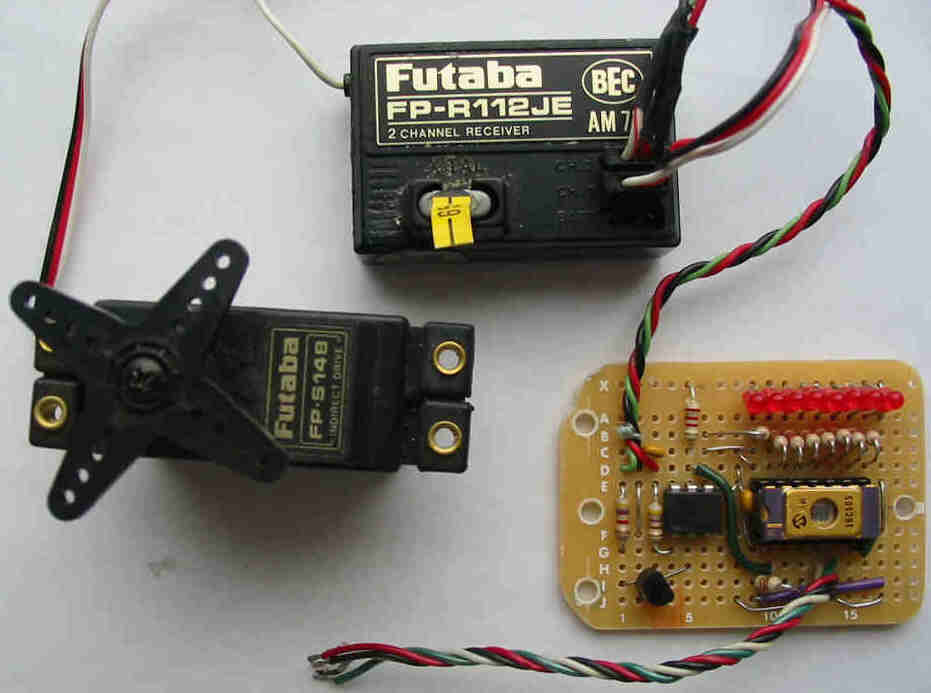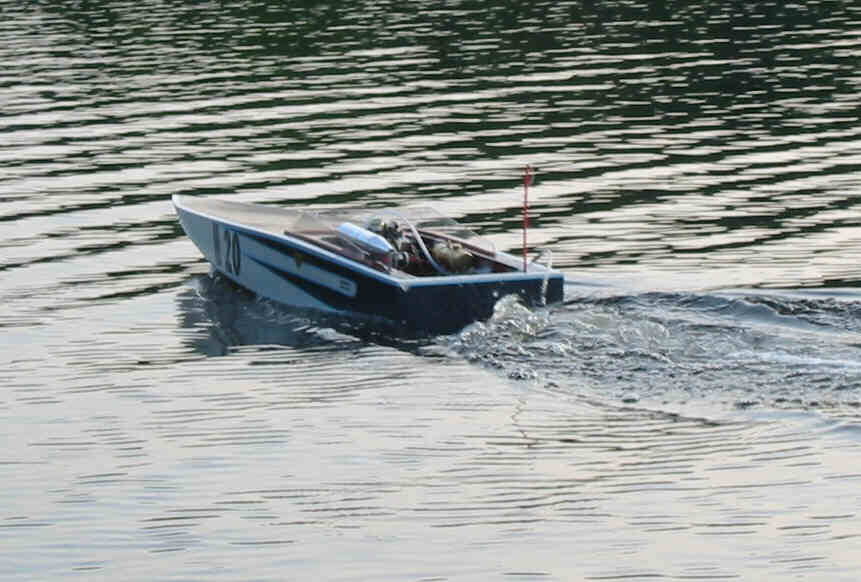
EVIC
Update #14, July 1, 2002A 4th EVIC - Walt Hiester gets his Engine Running.
Congratulation to Walt Hiester who got his EVIC engine running in June. Walt's engine is the 4th. The other 3 were all at NAMES and appear in the attached picture. Walt has promised pictures and information on the changes he made to the design. These should appear in Update #15.
Some Experiments and Some Problems
Since NAMES I have been working to improve the performance of my 2nd EVIC engine. I have experimented with increased valve lifts, stronger valve springs, solenoids and software changes. The top speed and power output are slowly increasing. I got a record top speed of 11,200 rpm on June 19th. My intake valve lift is now 0.040" and the exhaust 0.035". The exhaust valve spring now produces 36 ounces of force and the intake valve spring 30 ounces. These stronger springs get the valves closed more quickly but they now take slightly longer to open. When I tried a stronger intake valve spring the valve closed when the voltage was reduced to the holding voltage. 30 ounces is about the limit for the Bicron intake valve solenoid.
I have made 2 more experimental solenoids in an attempt to come up with something better that the Bicron ones I have been using. However my solenoids are slow compared to the Bicron ones. I am getting more power but the time to open the valves is too long. I did run one of the engines using my last design for the intake solenoid. The top speed was under 6000 rpm. The engine failed to run when I tried my solenoid on the exhaust side. So for now the Bicron parts are the only solution.
I had a failure of the bushing on the big end of the connecting rod of my 2nd engine in early June. I had made the bushing out of sintered bronze. It fractured into a 1000 pieces after I had tried to measure the engines power output. I now know that sintered bronze will fail in this way and is the wrong material for this application. Fortunately there was no other damage done to the engine. I replaced both connecting rod bushings with 954 bearing bronze. As Ron Colonna warned me lubrication can be a problem with this material and sure enough the big end bushing seized up. Again I was lucky and no real damage was done. To solve the lubrication problem I drilled 3 small holes into the centre of the bushing and made shallow X grooves from each hole to ensure that the surface got adequate lubrication. I haven't had any problems since.

Putting my 2nd EVIC to Work
Whenever I show my EVIC engines folks ask "What are you going to put them in?" It has always been my intention to put my 2nd engine to work and my answer this year at NAMES was "a model boat". With the help of some the fellows at the local gas boat club I obtained an older 52" deep V hull and most of the required fittings. My first step was to interface the engine to a centrifugal clutch from an old weed eater engine. Then I designed a radio control "Electronic Throttle" interface that allows me to throttle the engine from my R/C transmiter by changing the valve timing. It works very nicely.
I installed the engine, electronics, control battery and radio gear in the boat last week. I had to turn the head 90 degrees and make a new (water cooled) adapter for the muffler. I am using a Modelelectric Model "E" ignition coil mounted up very close to the plug thus keeping the HV lead very short. The 4.8 volt NiCad ignition battery is on the port side away from the control electronics. I have a 10K resistor in the high voltage lead to reduce EMI. I have had no EMI problems with this setup.

The whole works weighs 25 pounds (11.4 Kg), about 7 pounds (3 Kg) over the desired weight. But everything was working so on June 27th I took it out the club for its first tests. It ran well but it was a bit slow, too slow to get up on a plane. A larger 642 propeller produced a little more speed on the second run but still not enough to get it planing.
I have now installed one of my digital tachs in the radio box so that I can monitor the engine's performance on the next test. I have reduced the weight by about 12 ounces and I am trying to get rid of another a pound or two. I hope to add some water cooling to the head before the next test. I am also looking at a couple of ways to coax a little more power out of the engine. More on this in Update #15 ...

Dave Bowes